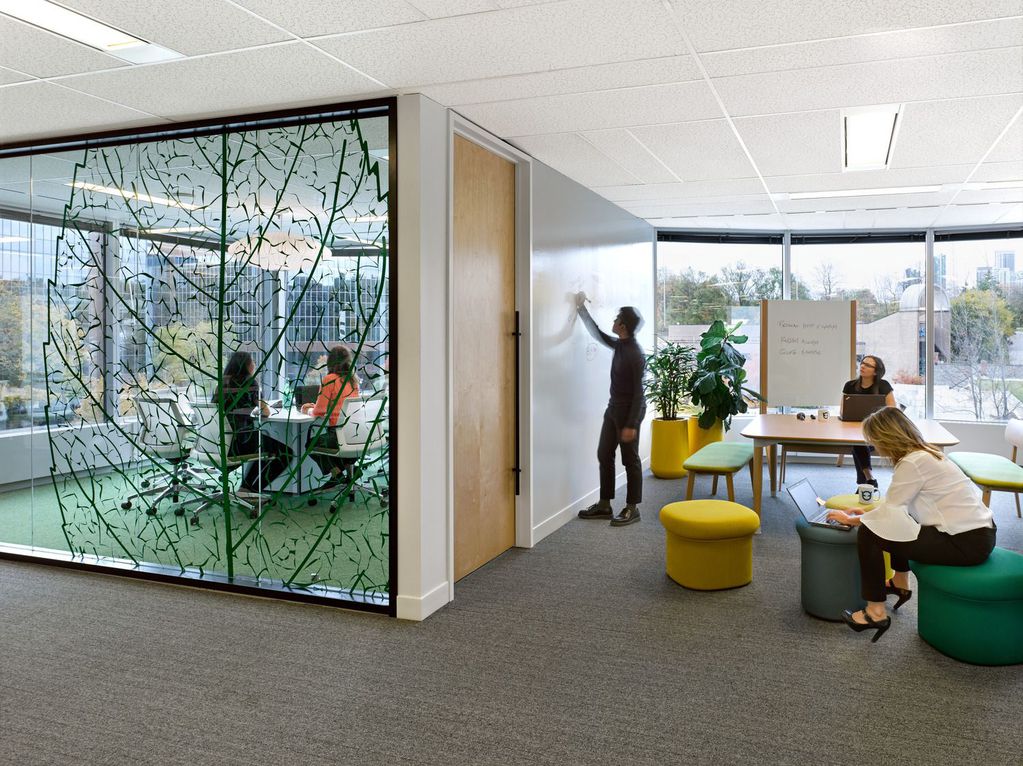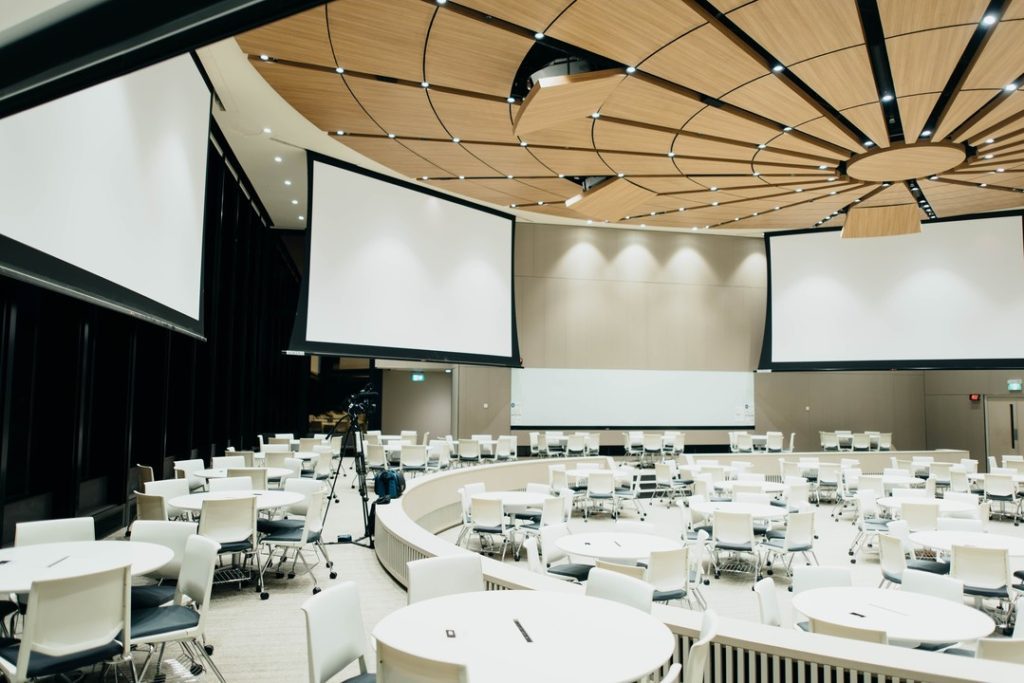Creating a safe and efficient workplace relies on a partnership that sees technology and interior design on equal terms, and most importantly, is driven by an end-user focused approach to space design. As AV technology evolves, so also evolves the wholistic design of a workplace. It is with that partnership in mind AV designers, architects, and interior designers must work together to create comfortable, safe, and efficient working environments.
Start with Strategy
As recent events have shown, the importance of AV technology integration in the workplace cannot be understated. A well-developed technology and design strategy, leads to well-implemented AV technology in all spaces, and that has the power to drive employee satisfaction, improve business efficiency and customer experience. In other words, well designed and implemented spaces result in happy employees, which result in happy customers.
Another consideration is that every organization has a unique culture and workflow. By understanding this unique culture and making it an integral part of the space design baseline, a design team can then develop the best strategy for the ultimate goals of the project. Understanding end-user requirements and preferences are vital during this stage of design, as these comments (coupled with the company culture), should greatly influence the overall space design.
An often-overlooked area of consideration is that of the experience of guests and visitors. While day to day employees might be familiar with the space, guests offer a unique challenge. Ensure your design considers items such as corporate marketing, digital signage, and wayfinding, as these are all a part of the greater design concept and overall feel a space creates.
While not new in concept, a more prevalent theme currently finds employees and guests alike expecting the usual collaborative environment we have all grown accustomed to, while offering an increased emphasis on hygiene and cleanliness. With many on a hybrid schedule, a spaces technology design has become even more important, allowing companies to get their best and most important work done safely and collaboratively. Consider investing in hygienic materials and technology that lends itself to less physical interaction. Going back to retroactively upgrade a project will cost you more than simply investing in long-term success. Consult with your AV technology team and interior design team, to see where you should invest and where savings might be had.
Consistency is Key
Designing systems with the end-user in mind is the best way to achieve consistent, positive results. Imagine the experience your employees, customers, and visitors will have when entering a space. Sight, sound, and touch are all essential elements that contribute to the overall feel and functionality of a space. When your design team collaborates and a design is inclusive of all of these elements, a space feels more cohesive in nature, as well as contributes to the larger narrative of the company’s culture.
An office space should offer easy connectivity that fits into the brand’s look and should always be designed to be intuitive, adaptable, and durable. Today’s workplace technology not only should function well in the office but must also be flexible and portable, allowing users to work from home with as few technological capability concessions made as possible. Cloud or intelligence-based technologies such as mobile apps, voice commanded or sensor-activated capabilities, and one-touch dialing are a few ways that new technology can be designed into a space to allow users maximum flexibility while maintaining ease of functionality.
Whatever technologies you choose to implement must be incorporated into designs consistently throughout the entire space. For example, all meeting rooms of a similar type should present users with consistent capabilities and interfaces, so that the user is familiar with what to expect in each meeting space. An end-user should feel that they can navigate a system smoothly in any space, as a consistent layout and technology will provide a feeling of comfort and familiarity.
Aesthetics and AV Works Together
Aesthetics are important. While there are many options for beautifully designed pieces of furniture available, this aesthetic beauty is not helpful if employees can’t easily access the technology they need to perform their work. Involving your chosen AV Integration partner as early as possible in the design process is vital to allowing elegant and flawless space design with all of the fully integrated technology expected in the modern workplace.
As mentioned in an earlier post, AV designers have a range of technology options, each with strengths and weaknesses. Ultimately, the best technology options not only allow users to accomplish tasks, but also should be fully integrated into the space’s design purpose. Focusing on the wholistic space design will help drive decisions regarding items such as display selection and placement, the presence or placement of an audio source, cabling pathways, and protocol selection, and how users will interface with the technology.
At AV-Tech we always have aesthetics in mind with every project design and AV installation. Integrating technology that aesthetically integrates into a space but also can evolve with the people and workflow in it is something we pride ourselves on and is a vital part of our process. Enhancing workplaces for better collaboration, flexibility, productivity, and wellbeing utilizing technology is what we do best.



